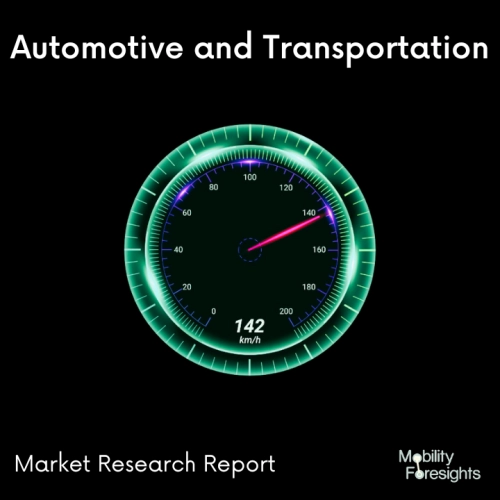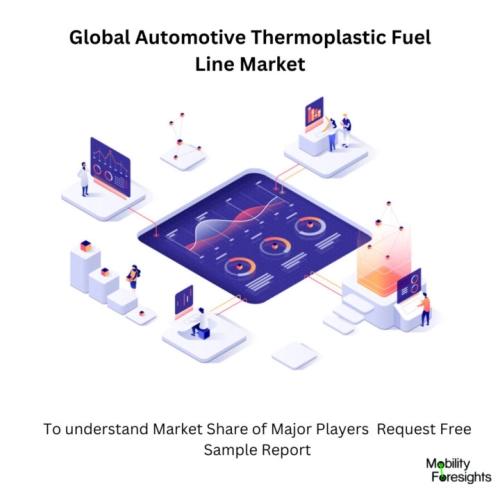
- Get in Touch with Us

Last Updated: Apr 25, 2025 | Study Period: 2023-2030
Thermoplastics offer a unique combination of properties, which makes them ideally suited for automotive fuel systems.
These properties include low temperature processing, low flex modulus, ease of bonding and excellent permeation resistance to various fuels.
Examples of various applications of these fluoropolymers are highlighted and shown in fuel management constructions in combination with both elastomers as well as plastics.
Most automotive hard line connections use either a 45-degree or a 37-degree flare. On hard lines for brakes, transmission lines, and older fuel systems, the SAE (Society of Automotive Engineers) standard known as the 45-degree inverted flare can be seen.
These use an inverted flare fitting and are double flared (a two-step technique). The AN fitting, which has a single flare and a 37-degree flare, got its name from being used by the Army and Navy. It goes without saying that these two flare styles and their fittings cannot be combined.

Global automotive thermoplastic fuel line line market accounted for $XX Billion in 2022 and is anticipated to reach $XX Billion by 2030, registering a CAGR of XX% from 2023 to 2030.
For use with gasoline, diesel fuel, and lubricating oil, Low Pressure Coupled and Uncoupled Low-Permeation Fuel Hose with Physical, Extrac Table, and Fuel Permeation Properties as Specified in SAE J 30 - R2 - Type 2 Standard.
The unveiling of its new Thermoplastic Refrigerant Lines (TPRL), which are intended exclusively for use in electric vehicles, was announced by British manufacturer of automotive fluid storage, transportation, and delivery systems TI Fluid via press release (EVs).
Thermoplastic tapes, also referred to as thermoplastic prepregs, are useful in a wide range of industries and applications, including pressure vessels (such as hydrogen storage tanks and compressed natural gas tanks), flexible pipes for oil and gas and water transportation, and for adding local reinforcement to pre-formed components.
Evopreg PA polyamide and Evopreg PP polypropylene tapes are the first product families to be introduced; more product lines are anticipated when new client requirements materialise.
| Sl no | Topic |
| 1 | Market Segmentation |
| 2 | Scope of the report |
| 3 | Abbreviations |
| 4 | Research Methodology |
| 5 | Executive Summary |
| 6 | Introduction |
| 7 | Insights from Industry stakeholders |
| 8 | Cost breakdown of Product by sub-components and average profit margin |
| 9 | Disruptive innovation in the Industry |
| 10 | Technology trends in the Industry |
| 11 | Consumer trends in the industry |
| 12 | Recent Production Milestones |
| 13 | Component Manufacturing in US, EU and China |
| 14 | COVID-19 impact on overall market |
| 15 | COVID-19 impact on Production of components |
| 16 | COVID-19 impact on Point of sale |
| 17 | Market Segmentation, Dynamics and Forecast by Geography, 2023-2030 |
| 18 | Market Segmentation, Dynamics and Forecast by Product Type, 2023-2030 |
| 19 | Market Segmentation, Dynamics and Forecast by Application, 2023-2030 |
| 20 | Market Segmentation, Dynamics and Forecast by End use, 2023-2030 |
| 21 | Product installation rate by OEM, 2023 |
| 22 | Incline/Decline in Average B-2-B selling price in past 5 years |
| 23 | Competition from substitute products |
| 24 | Gross margin and average profitability of suppliers |
| 25 | New product development in past 12 months |
| 26 | M&A in past 12 months |
| 27 | Growth strategy of leading players |
| 28 | Market share of vendors, 2023 |
| 29 | Company Profiles |
| 30 | Unmet needs and opportunity for new suppliers |
| 31 | Conclusion |
| 32 | Appendix |